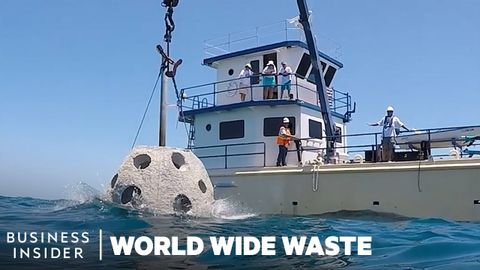
字幕與單字
用人类遗骸制成的珊瑚礁如何恢复佛罗里达海岸线(How Reefs Made With Human Remains Restore Florida Coast Line | World Wide Waste)
00
joey joey 發佈於 2021 年 07 月 01 日收藏
影片單字
concrete
US /kɑnˈkrit, kɑŋ-, ˈkɑnˌkrit, ˈkɑŋ-/
・
UK /'kɒŋkri:t/
- n. (u.)混凝土
- v.t.具體;用混凝土覆蓋
- adj.具體的
- n. (c.)實物
- v.i.凝固
B1 中級中級英檢
更多 使用能量
解鎖所有單字
解鎖發音、解釋及篩選功能
